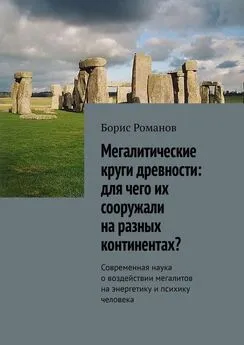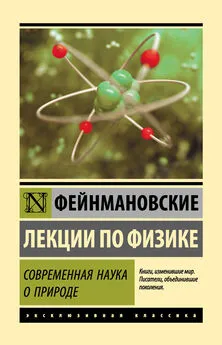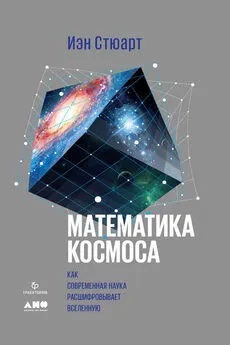Йэн Стюарт - Математика космоса [Как современная наука расшифровывает Вселенную]
- Название:Математика космоса [Как современная наука расшифровывает Вселенную]
- Автор:
- Жанр:
- Издательство:Альпина нон-фикшн
- Год:2018
- Город:Москва
- ISBN:978-5-9614-5228-0
- Рейтинг:
- Избранное:Добавить в избранное
-
Отзывы:
-
Ваша оценка:
Йэн Стюарт - Математика космоса [Как современная наука расшифровывает Вселенную] краткое содержание
«Математика космоса» — это волнующий и захватывающий математический квест на деталях внутреннего мира астрономии и космологии.
Издание подготовлено в партнерстве с Фондом некоммерческих инициатив «Траектория».
Математика космоса [Как современная наука расшифровывает Вселенную] - читать онлайн бесплатно ознакомительный отрывок
Интервал:
Закладка:
B. Dubrulle and F. Graner. Titius-Bode laws in the solar system. Part II: Build your own law from disk models, Astron. & Astrophys. 282 (1994) 269–276.
A. J. Ste, N. J. Cunningham, A. B. Shinn, and S. A. Stern. A search for Vulcanoids with the STEREO heliospheric imager, Icarus 233 (2013) 48–56.
M. Moons and A. Morbidelli. Secular resonances inside mean-motion commensurabilities: the 4/1, 3/1, 5/2 and 7/3 cases, Icarus 114 (1995) 33–50.
M. Moons, A. Morbidelli, and F. Migliorini. Dynamical structure of the 2/1 commensurability with Jupiter and the origin of the resonant asteroids, Icarus 135 (1998) 458–468.
Анимация, показывающая связь между точками Лагранжа и гравитационным потенциалом https://en.wikipedia.org/wiki/File: Lagrangian_points_equipotential.gif
См. анимированную иллюстрацию «Астероиды-троянцы вокруг Юпитера» https://www.exploremars.org/trojan-asteroids-around-jupiter-explained.
F. A. Franklin. Hilda asteroids as possible probes of Jovian migration, Astron. J. 128 (2004) 1391–1406.
http://www.solstation.com/stars/jupiter.htm
P. Goldreich and S. Tremaine. Towards a theory for the Uranian rings, Nature 277 (1979) 97–99.
M. Kenworthy and E. Mamajek. Modeling giant extrasolar ring systems in eclipse and the case of J1407b: sculpting by exomoons? arXiv:1501.05652 (2015).
F. Braga-Rivas and 63 others. A ring system detected around Centaur (10199) Chariklo, Nature 508 (2014) 72–75.
E. J. Rivera, G. Laughlin, R. P. Butler, S. S. Vogt, N. Haghighipour, and S. Meschiari. The Lick-Carnegie exoplanet survey: a Uranus-mass fourth planet for GJ 876 in an extrasolar Laplace configuration, Astrophys. J. 719 (2010) 890–899.
B. E. Schmidt, D. D. Blankenship, G. W. Patterson, and P. M. Schenk. Active formation of ‘chaos terrain’ over shallow subsurface water on Europa, Nature 479 (2011) 502–505.
P. C. Thomas, R. Tajeddine, M. S. Tiscareno, J. A. Burns, J. Joseph, T. J. Loredo, P. Helfenstein, and C. Porco. Enceladus’s measured physical libration requires a global subsurface ocean, Icarus (2015) in press; doi:10.1016/j.icarus.2015.08.037.
S. Charnoz, J. Salmon, and A. Crida. The recent formation of Saturn’s moonlets from viscous spreading of the main rings, Nature 465 (2010) 752–754.
M. Massironi and 58 others. Two independent and primitive envelopes of the bilobate nucleus of comet 67P, Nature 526 (2015) 402–405.
A. Bieler and 33 others. Abundant molecular oxygen in the coma of comet 67P/Churyumov — Gerasimenko, Nature 526 (2015) 678–681.
P. Ward and D. Brownlee. Rare Earth , Springer, New York, 2000.
J. Horner and B. W. Jones. Jupiter — friend or foe? I: The asteroids, Int. J. Astrobiol. 7 (2008) 251–261.
См. видео http://hubblesite.org/newscenter/archive/releases/2015/24/video/a/
J. R. Buchler, T. Serre, and Z. Kolláth. A chaotic pulsating star: the case of R Scuti, Phys. Rev. Lett. 73 (1995) 842–845.
T. Palmer. The real butter y E ect, Nonlinearity 27 (2014) R123–R141.
V. Hoffmann, S. L. Grimm, B. Moore, and J. Stadel. Chaos in terrestrial planet formation, Mon. Not. RAS (2015); arXiv: 1508.00917.
A. Milani and P. Farinella. The age of the Veritas asteroid family deduced by chaotic chronology, Nature 370 (1994) 40–42.
June Barrow-Green. Poincaré and the Three Body Problem , American Mathematical Society, Providence, 1997.
M. R. Showalter and D. P. Hamilton. Resonant interactions and chaotic rotation of Pluto’s small moons, Nature 522 (2015) 45–49.
J. Wisdom, S. J. Peale, and F. Mignard. The chaotic rotation of Hyperion, Icarus 58 (1984) 137–152.
M. A. Richards and nine others. Triggering of the largest Deccan eruptions by the Chicxulub impact, GSA Bull. (2015), doi: 10.1130/B31167.1.
W. F. Bottke, D. Vokrouhlický, and D. Nesvorný. An asteroid breakup 160 Myr ago as the probable source of the K/T impactor, Nature 449 (2007) 48–53.
M. Minovitch. A method for determining interplanetary free-fall reconnaissance trajectories, JPL Tech. Memo . TM-312–130 (1961) 38–44.
M. Lo and S. Ross. SURFing the solar system: invariant manifolds and the dynamics of the solar system, JPL IOM 312/97, 1997.
M. Lo and S. Ross. The Lunar L1 gateway: portal to the stars and beyond, AIAA Space 2001 Conf. , Albuquerque, 2001.
http://sci.esa.int/where_is_rosettahas a dramatic animation of this roundabout path.
W. S. Koon, M. W. Lo, J. E. Marsden, and S. D. Ross. The Genesis trajectory and heteroclinic connections, Astrodynamics 103 (1999) 2327–2343.
F. Hoyle. Synthesis of the elements from hydrogen, Mon. Not. RAS 106 (1946) 343–383.
E. M. Burbidge, G. R. Burbidge, W. A. Fowler, and F. Hoyle. Synthesis of the elements in stars, Rev. Mod. Phys. 29 (1957) 547–650.
A. J. Korn, F. Grundahl, O. Richard, P. S. Barklem, L. Mashonkina, R. Collet, N. Piskunov, and B. Gustafsson. A probable stellar solution to the cosmological lithium discrepancy, Nature 442 (2006) 657–659.
F. Hoyle. On nuclear reactions occurring in very hot stars: the synthesis of the elements between carbon and nickel, Astrophys. J. Suppl. 1 (1954) 121–146.
F. Hoyle. The universe: past and present reflections, Eng. & Sci. (November 1981) 8–12.
G. H. Miller and 12 others. Abrupt onset of the Little Ice Age triggered by volcanism and sustained by sea-ice/ocean feedbacks, Geophys. Res. Lett. 39 (2012) L02708.
H. W. Babcock. The topology of the Sun’s magnetic eld and the 22-year cycle, Astrophys. J. 133 (1961) 572–587.
E. Nesme-Ribes, S. L. Baliunas, and D. Sokoloff. The stellar dynamo, Scientific American (August 1996) 30–36. For mathematical details and more recent work with more realistic models, see: M. Proctor. Dynamo action and the Sun, EAS Publ. Ser. 21 (2006) 241–273.
X. Dumusque and 10 others. An Earth-mass planet orbiting α Centauri B, Nature 491 (2012) 207–211.
V. Rajpaul, S. Aigrain, and S. J. Roberts. Ghost in the time series: no planet for Alpha Cen B, arXiv:1510.05598; Mon. Not. RAS , in press.
Z. K. Berta-Thompson and 20 others. A rocky planet transiting a nearby low-mass star, Nature 527 (2015) 204–207.
E. Thommes, S. Matsumura, and F. Rasio. Gas disks to gas giants: Simulating the birth of planetary systems, Nature 321 (2008) 814–817.
M. Hippke and D. Angerhausen. A statistical search for a population of exo-Trojans in the Kepler dataset, ArXiv:1508.00427 (2015).
M. Lachmann, M. E. J. Newman, and C. Moore. The physical limits of communication, Working paper 99–07–054, Santa Fe Institute 2000.
I. N. Stewart. Uninhabitable zone, Nature 524 (2015) 26.
P. S. Behroozi and M. Peeples. On the history and future of cosmic planet formation, Mon. Not. RAS (2015); arXiv: 1508.01202.
D. Sasselov and D. Valencia. Planets we could call home, Scientific American 303 (August 2010) 38–45.
S. A. Benner, A. Ricardo, and M. A. Carrigan. Is there a common chemical model for life in the universe? Current Opinion in Chemical Biology 8 (2004) 676–680.
J. Stevenson, J. Lunine, and P. Clancy. Membrane alternatives in worlds without oxygen: Creation of an azotosome, Science Advances 1 (2015) e1400067.
J. Cohen and I. Stewart. Evolving the Alien , Ebury Press, London, 2002.
W. Bains. Many chemistries could be used to build living systems, Astrobiology 4 (2004) 137–167.
J. von Neumann. Theory of Self-Reproducing Automata , University of Illinois Press, Urbana, 1966.
R. Penrose. Conformal treatment of infinity, in Relativity, Groups and Topology (ed. C. de Witt and B. de Witt), Gordon and Breach, New York, 1964, pp. 563–584; Gen. Rel. Grav. 43 (2011) 901–922.
Animations of what it would look like when passing through these wormholes can be found at https://jila.colorado.edu/~ajsh/insidebh/penrose.html
B. L. Webster and P. Murdin. Cygnus X-1 — a spectroscopic binary with a heavy companion? Nature 235 (1972) 37–38. H. L. Shipman, Z. Yu, and Y. W. Du. The implausible history of triple star models for Cygnus X-1: Evidence for a black hole, Astrophys. Lett. 16 (1975) 9–12.
P. Mazur and E. Mottola. Gravitational condensate stars: An alternative to black holes, arXiv: gr-qc/0109035 (2001).
Colin Stuart. When worlds collide, New Scientist (24 October 2015) 30–33.
N. J. Cornish, D. N. Spergel, and G. D. Starkman. Circles in the sky: finding topology with the microwave background radiation, Classical and Quantum Gravity 15 (1998) 2657–2670. J. R. Weeks. Reconstructing the global topology of the universe from the cosmic microwave background, Classical and Quantum Gravity 15 (1998) 2599–2604.
Planck collaboration (numerous authors). Planck 2013 results XVI: Cosmological parameters, Astron. & Astrophys. 571 (2014); arXiv:1303.5076.
M. Alcubierre. The warp drive: hyper-fast travel within general relativity, Classical and Quantum Gravity 11 (1994). L73–L77. S. Krasnikov. The quantum inequalities do not forbid spacetime shortcuts, Phys. Rev. D 67 (2003) 104013.
D. J. Fixsen. The temperature of the cosmic microwave background, Astrophys. J. 707 (2009) 916–920. Другие цифры, упомянутые в тексте, являются историческими оценками, теперь устаревшими.
Terry Pratchett, Ian Stewart, and Jack Cohen. The Science of Discworld IV: Judgement Day , Ebury, London, 2013.
Penrose’s work is reported in: Paul Davies. The Mind of God , Simon & Schuster, New York, 1992.
G. F. R. Ellis. Patchy solutions, Nature 452 (2008) 158–161. G. F. R. Ellis. The universe seen at different scales, Phys. Lett. A 347 (2005) 38–46.
T. Buchert. Dark energy from structure: a status report, T. Gen. Rel. Grav. 40 (2008) 467–527.
J. Smoller and B. Temple. A one parameter family of expanding wave solutions of the Einstein equations that induces an anomalous acceleration into the standard model of cosmology, arXiv:0901.1639.
R. R. Caldwell. A gravitational puzzle, Phil. Trans. R. Soc. London A 369 (2011) 4998–5002.
R. Durrer. What do we really know about dark energy? Phil. Trans. R. Soc. London A 369 (2011) 5102–5114.
Marcus Chown. End of the beginning, New Scientist (2 July 2005) 30–35.
D. J. Fixsen. The temperature of the cosmic microwave background, Astrophys. J. 707 (2009) 916–920.
Читать дальшеИнтервал:
Закладка:
![Обложка книги Йэн Стюарт - Математика космоса [Как современная наука расшифровывает Вселенную]](/books/1095732/jen-styuart-matematika-kosmosa-kak-sovremennaya-nau.webp)

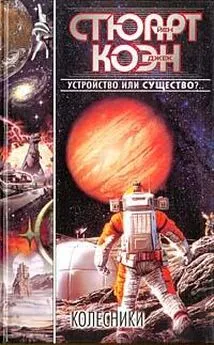
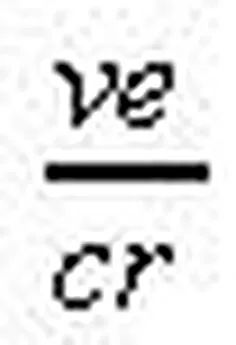
![Йэн Стюарт - Укрощение бесконечности. История математики от первых чисел до теории хаоса [litres]](/books/1087255/jen-styuart-ukrochenie-beskonechnosti-istoriya-matema.webp)
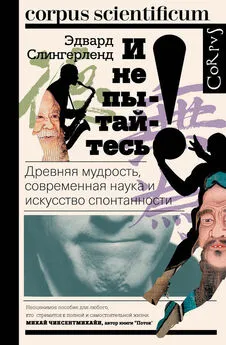
![Сергей Васильев - Современная наука [СИ]](/books/1092805/sergej-vasilev-sovremennaya-nauka-si.webp)
